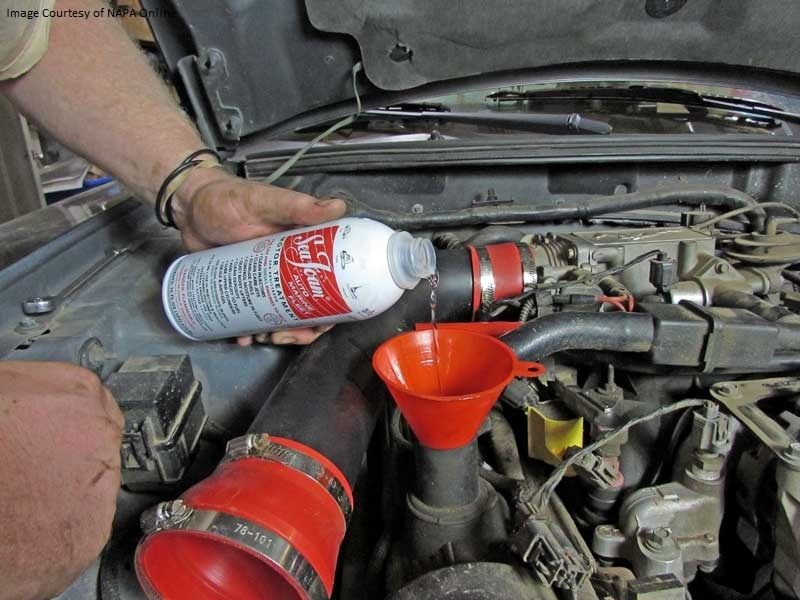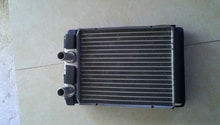Ford F-Series: How to Add Sea Foam Motor Treatment to Gas and Oil
Sea Foam Motor Treatment is considered by many as the go-to engine and fuel system treatment for any vehicle. Having been on the market for 75+ years, Sea Foam has stood the test of time and helped millions of vehicles remain in good working order. If you are looking for an additive to treat your engine or fuel system, look no further than Sea Foam!
This article applies to Ford F-Series Trucks (All year models).
Sea Foam is an all-in-one formula that can be used in both gasoline and diesel engines to treat the fuel and lubrication systems to ensure healthy engine performance. Over time, engines can become clogged with unwanted build-up (sludge, carbon deposits, varnish, etc.) that can be detrimental to longevity and performance. Sea Foam Motor Treatment can quickly, easily, and safely remove these types of build-up from an engine with its proprietary petroleum-based formula that does not contain any harsh detergents or chemicals that would otherwise damage your engine. This article will outline the various ways in which Sea Foam can be used in your Ford truck.
Key Information
- DIY Time: 5-30 minutes
- DIY Cost: $10-$50
- Req. Skill Level: Easy - Requires no special tools or skills to use.
Materials Needed
- (Qty 1-4) 16 oz can or (Qty 1) gallon Sea Foam Motor Treatment
- Small funnel
Depending on the engine configuration and fuel tank capacity of your truck, additional cans of Sea Foam may be necessary.
Fuel System Treatment
Step 1 - Add Sea Foam to Fuel Tank(s)
Whether it be for a gasoline or diesel engine, adding Sea Foam to the fuel tank for a fuel system treatment is an extremely simple task. First, determine the size of the fuel tank in your truck and approximately how much fuel is in your tank. Using a small funnel, add 2-3 ounces of Sea Foam per gallon of fuel for a fuel system cleaning. For example, if your truck holds 24 gallons of fuel and the tank is full, use 48-72 ounces of Sea Foam.

Pro Tip:
It is best to add Sea Foam to a fully filled tank to ensure the correct mixing ratio, but there is also no harm in adding Sea Foam treatment to a partially filled tank. An incorrect mixing ratio will not harm anything.
Step 2 - Drive the Truck
With Sea Foam added to your fuel tank, the only thing left to do is drive the truck. Sea Foam will treat components of the fuel system, upper cylinders, and combustion chambers as the fuel makes its way from the fuel tank and into the cylinders. Sea Foam has proven to be especially effective at cleaning fuel injectors, carburetors, intake valve deposits, cylinder head combustion chambers, and piston head deposits.
While Sea Foam is typically used as an occasional fuel system cleaner, it can also be added for regular fuel system maintenance every 3,000-5,000 miles at a mixing ratio of 1 oz to every gallon of fuel.
Note
Sea Foam has been known to cause some smoking from the exhaust pipe. Do not be alarmed as this is the Sea Foam working to remove contaminants from the engine and fuel system, and will subside after treatment.
Lubrication System Treatment
Step 1 - Add Sea Foam to Engine Oil
In addition to treating the fuel system, Sea Foam is equally as effective when mixed with the engine oil to help remove sludge and oil varnish as well as quieting noisy valve lifters & timing chain tensioners and cleaning oil wiper rings and VVT actuators. To treat the lubrication system, first, confirm your engine's oil capacity by referring to the owner's manual. Next, pour 1 oz of Sea Foam per quart of engine oil through the oil filler tube. Unlike a fuel system treatment, stronger mixing ratios of Sea Foam are not recommended when used in the lubrication system.

Note:
Did you know that Sea Foam can also act as a fuel stabilizer to keep fuel good for up to 2 years?
Step 2 - Run Engine
With the proper amount of Sea Foam added to the engine oil, you are now ready to run the engine. Sea Foam used in the lubrication system is recommended as a short-term treatment that should be completed prior to an engine oil & filter change. It is advised that Sea Foam remains in the engine between 100-300 miles of driving; however, many have experienced positive results by simply running the engine for 15-30 minutes with Sea Foam in the oil before draining.
Note
Sea Foam Motor Treatment works to clean and liquefy heavier oil deposits, thus the engine oil will look darker than normal upon draining.
Step 3 - Change Engine Oil & Filter
As mentioned, the engine oil and filter should be changed following the oil treatment to remove all of the byproducts loosened and dissolved by the Sea Foam.

Related Discussions
- Adding Seafoam to Oil? - Ford-Trucks.com
- What Does Seafoam Do for my Engine? - Ford-Trucks.com
- To Seafoam or Not to Seafoam? - Ford-Trucks.com







